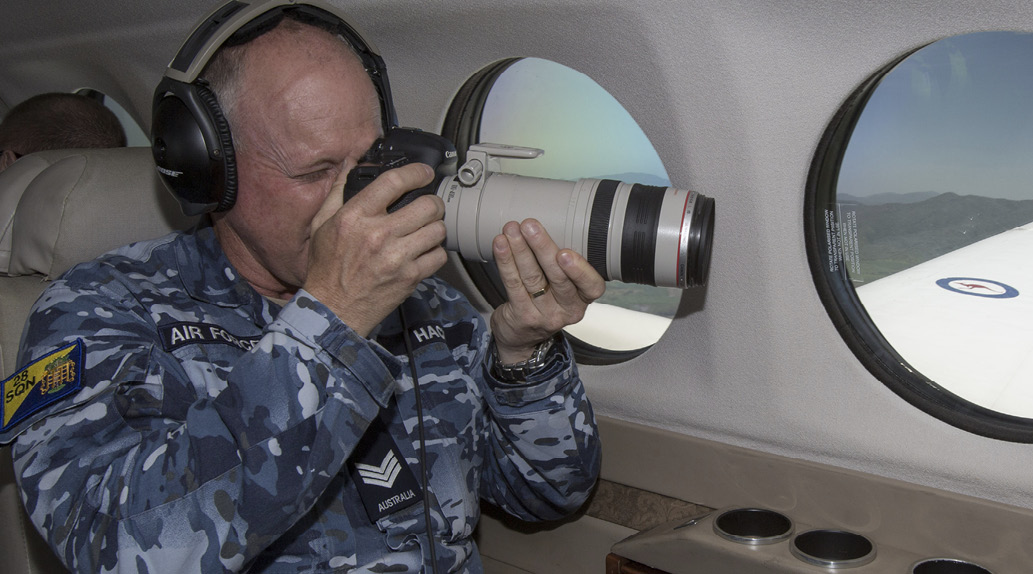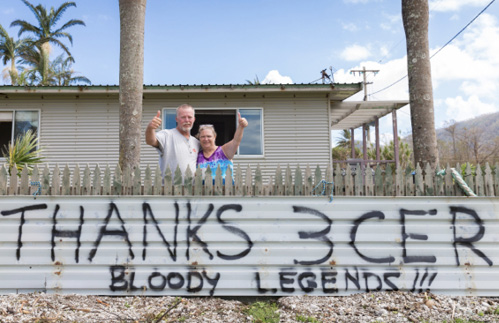Maintaining communication during relief and recovery efforts: the ADF public affairs capability
Fiona Bickerstaff, Australian Defence Force
Article
During an emergency, information can mean the difference between life and death. Emergency broadcasts that issue evacuation orders, warnings and information that help to prepare and protect the public have primacy in an unfolding situation.
Once the immediate threat to life and property passes though, the imperative to keep the public informed of details surrounding ongoing rescue, relief and recovery efforts remains. When involved in the response and recovery effort, the Australian Defence Force (ADF) maintains its information activities and responsibilities through its dedicated Military Public Affairs assets.
The ADF is often called on by state and territory governments to provide emergency support in times of natural disaster or civil emergency, known as a DACC task – defence assistance to the civil community.
Once this request for support is made, the ADF will rapidly deploy personnel and equipment needed to provide the support that the civilian emergency services require.
Just as every agency plays its part in emergency response, each agency has a responsibility to communicate its response to the public. This ensures those immediately affected stay informed to ensure that broader public safety and timely and accurate information is circulated through the right communications channels.

To achieve this, the ADF deploys Military Public Affairs assets as part of its emergency support commitment, either individually or as a capability brick known as a Military Camera Team. These assets are primarily drawn from its 1st Joint Public Affairs Unit (1JPAU).
1JPAU is a tri-service force element focused on fulfilling the Australian Government’s public information remit when it comes to defence and dedicated to informing the Australian public of the work of the ADF.
Typically, a Military Camera Team comprises a still photographer or Imagery Specialist, a videographer or Senior Imagery Specialist and a Team Leader, who provides the overall communications intent and administrative functions for the team as a whole.
Each member of the team is a highly skilled photographer, videographer or communications practitioner and also well-trained and highly capable members of the ADF, be it soldier, sailor or airman.
What makes this capability unique in an emergency response situation is the access that this combination of skills provides. The emergency response information space will invariably be well-serviced by designated state and local-level spokespeople, emergency service agencies communications staff, the media and indeed information from civilian eyewitnesses or ‘citizen journalists’.
Military Public Affairs personnel are able to provide an ‘up close and personal’ view of some of the relief or recovery efforts that ADF elements provide by embedding with these elements as they go about their work.
Each member is trained to navigate the hazards on the ground, have a keen understanding of the news cycle to provide timely and accurate information and the right equipment to ensure that still and video imagery is of the highest quality possible, easy to edit and ready to broadcast.
Military Public Affairs personnel help fill the ‘information gap’ that the media and other communications elements are unable to bridge, either due to physical obstruction or isolation, dislocation or ongoing threats or hazards in the area.
Additionally, a Military Public Affairs Officer or Team Leader assists as an information conduit to the chain of command, civilian emergency response partners and any military liaison officers embedded within Emergency Coordination Centres, making sure information flows through all channels and reaches the public via the right agency.
Natural disasters and civil emergencies present a complex and dynamic information environment and as the stakeholders grow, messages can be diluted and disinformation can take hold. Military Public Affairs personnel ensure that assistance to civilian emergency service partners remains at the heart of messaging so that Australians know that regardless of the emergency, the ADF is here to lend a helping hand.

Image: Australian Defence Force


